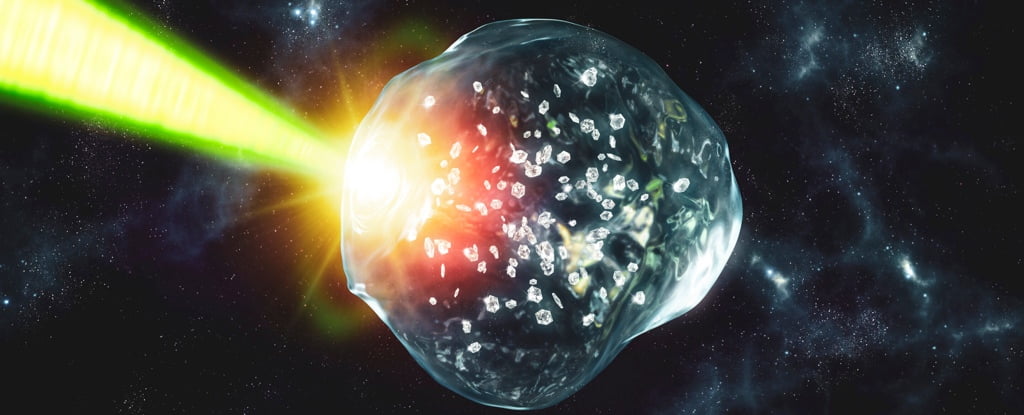
Distant worlds with “diamond rains” can be distributed in the universe
(ORDO NEWS) — Planets across the universe could be raining diamonds, scientists speculated Friday, using ordinary plastic to recreate strange precipitation thought to form deep inside Uranus and Neptune.
Previously, scientists had suggested that extremely high pressures and temperatures were turning hydrogen and carbon into hard diamonds thousands of kilometers below the surface of the ice giants.
Now, a new study published in the journal Science Advances has added oxygen to the mixture and shows that “diamond rain” may be more common than previously thought.
Ice giants such as Neptune and Uranus are considered the most common form of planets outside of our solar system, which means it could rain diamonds all over the universe.
Dominik Kraus, a physicist at German research lab HZDR and one of the authors of the study, said that diamond precipitation is very different from rain on Earth.
Below the surface of the planets is believed to be a “hot, dense fluid” where diamonds form and slowly sink into rocky, potentially Earth-like cores more than 10,000 kilometers (6,200 miles) deep, he said.
There, fallen diamonds can form huge layers extending “hundreds of kilometers or more,” Kraus told AFP.
Although these diamonds may not be as brilliant and cut as “a beautiful gem on a ring,” he said they were formed by the same forces as those found on Earth.
In an effort to replicate this process, the research team found the necessary mixture of carbon, hydrogen and oxygen in an easily accessible source - PET plastic, which is used for everyday food and bottle packaging.
Kraus said that although the researchers used very pure PET plastic, “in principle, the experiment should also work with Coke bottles.”
The group then fired a powerful optical laser at the plastic at the SLAC National Accelerator Laboratory in California.
Very, very short X-ray flashes of incredible brightness “allowed them to observe the formation of nanodiamonds - tiny diamonds too small to see with the naked eye,” Kraus said.
Oxygen, which is present in large quantities on these planets, really helps to pull hydrogen atoms away from carbon, so diamonds form more easily,” he added.
A new way to obtain nanodiamonds?
The experiment could point to a new way to produce nanodiamonds, which are finding increasing applications, including drug delivery, medical sensors, non-invasive surgery, and quantum electronics.
“Currently, nanodiamonds are produced by taking a piece of carbon or diamond and blowing it up with explosives,” said SLAC scientist and study co-author Benjamin Ofori-Okay.
Laser manufacturing may offer a cleaner and more easily controlled method for obtaining nanodiamonds,” he added.
The diamond rain study remains hypothetical because little is known about Uranus and Neptune, the most distant planets in our solar system.
Only one spacecraft - NASA’s Voyager 2 in the 1980s - flew past these two ice giants, and the data it sent back is still being used in research.
But a NASA team has outlined a potential new mission to the planets that could be launched in the next decade.
That would be fantastic,” Kraus said.
He says he looks forward to new data - even if it takes a decade or two.
—
Online:
Contact us: [email protected]
Our Standards, Terms of Use: Standard Terms And Conditions.



